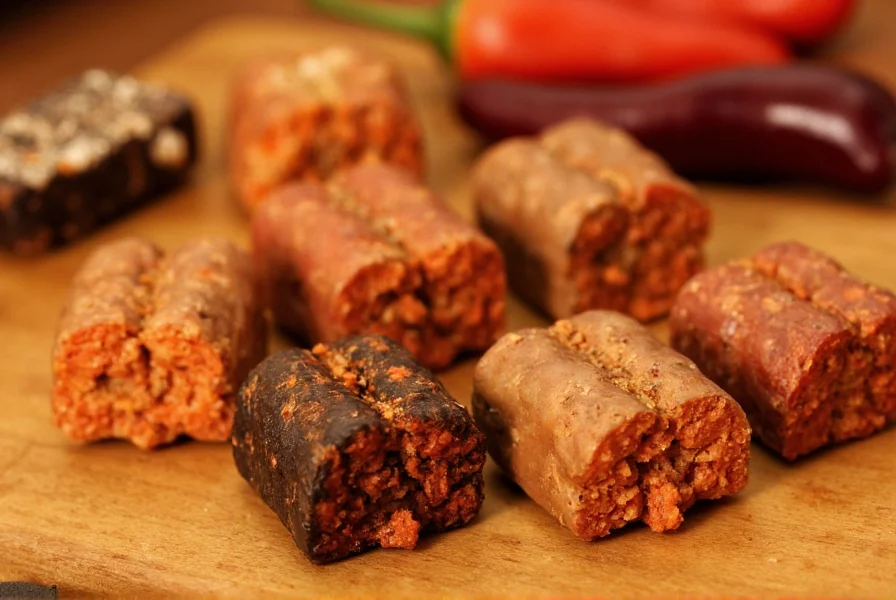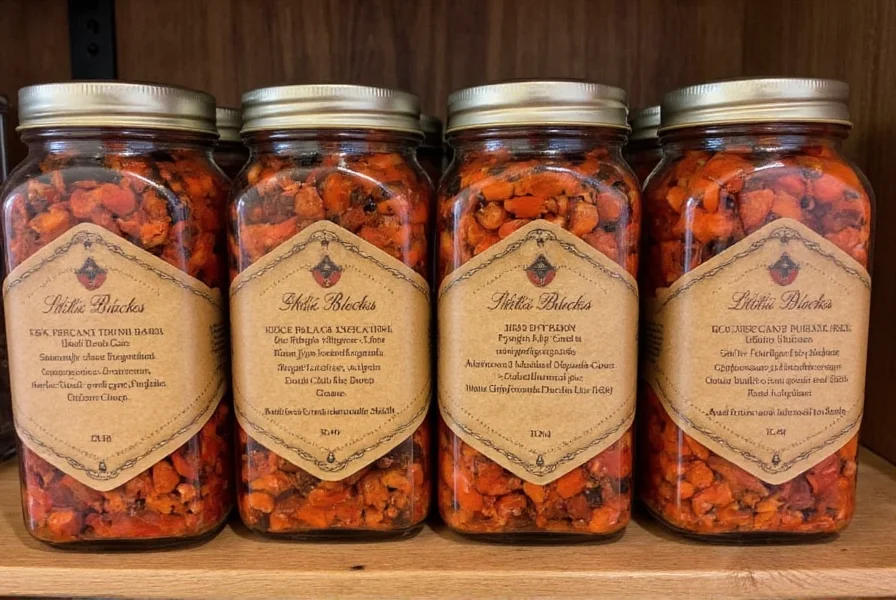Chili blocks represent one of the most authentic and shelf-stable forms of dried chili peppers available to home cooks and professional chefs. Unlike chili powder or flakes that lose potency quickly, these compressed bricks preserve the complete flavor profile of the original peppers for extended periods. Understanding how to properly select, store, and utilize chili blocks can significantly elevate your culinary creations with nuanced heat and depth that processed alternatives simply cannot match.
What Exactly Is a Chili Block?
Chili blocks, sometimes called chili bricks or chili cakes, consist of whole dried chili peppers that have been ground and compressed into solid rectangular or square forms. The production process involves carefully drying mature chili peppers, grinding them into a coarse powder, then compressing this material under pressure to form dense blocks without additives or binders. Traditional methods often use stone presses to achieve the perfect density that maintains structural integrity while allowing for easy portioning.
| Chili Block Type | Heat Level (SHU) | Flavor Profile | Common Culinary Uses |
|---|---|---|---|
| Ancho Chili Block | 1,000-2,000 | Fruity, raisin-like, mild smokiness | Moles, stews, marinades |
| Guajillo Chili Block | 2,500-5,000 | Berry-like, tangy, moderate heat | Sauces, salsas, braises |
| Chipotle Chili Block | 5,000-10,000 | Smoky, earthy, medium heat | Barbecue, beans, soups |
| Arbol Chili Block | 15,000-30,000 | Sharp, grassy, intense heat | Hot sauces, spice blends |
Different Types of Chili Blocks
Various chili varieties transform into distinctive blocks, each offering unique flavor characteristics. Ancho chili blocks provide mild, fruity notes ideal for complex sauces, while guajillo blocks deliver tangy berry flavors perfect for traditional Mexican salsas. Chipotle chili blocks offer that distinctive smoky depth that enhances barbecue applications, and arbol blocks bring intense heat for those seeking serious spice. Regional variations exist too—Thai bird's eye chili blocks differ significantly from Mexican varieties in both heat profile and flavor complexity.

Chili Blocks vs. Powdered Alternatives
The primary advantage of chili blocks over powdered forms lies in their superior shelf stability and flavor preservation. When chilies are ground into powder, the increased surface area accelerates oxidation and volatile oil evaporation, causing rapid flavor degradation. Chili blocks maintain their integrity until you're ready to use them, preserving the complete flavor compounds. Professional chefs consistently report that dishes prepared with freshly grated chili blocks demonstrate noticeably brighter, more complex flavor profiles compared to those made with pre-ground powders.
Practical Applications in Cooking
Using chili blocks requires slightly different techniques than powdered alternatives. The most effective method involves grating small amounts directly into dishes using a microplane zester or fine grater. This approach creates an almost paste-like consistency that integrates seamlessly into sauces, marinades, and soups. For traditional Mexican mole preparations, many chefs toast whole chili blocks before grinding them to enhance flavor complexity. When making adobo sauce, rehydrating small portions of chili block in warm water creates a concentrated base that surpasses store-bought alternatives in both flavor and authenticity.
Storage Techniques for Maximum Freshness
Proper storage significantly extends the shelf life of chili blocks. Keep them in an airtight container away from light and moisture—dark glass jars work exceptionally well. For long-term storage exceeding six months, refrigeration maintains optimal flavor, while freezing preserves quality for up to two years. Never store chili blocks near strong-smelling foods as they readily absorb surrounding odors. The paper or cloth wrapping often used for traditional chili blocks serves a purpose—it allows minimal airflow while protecting against moisture, unlike plastic which can trap humidity and promote mold.

Common Mistakes to Avoid
Many home cooks make critical errors when first using chili blocks. Never attempt to chop them with a knife—they're too hard and will damage your blades. Avoid soaking entire blocks unnecessarily, as this wastes product and dilutes flavor. Don't substitute chili blocks measure-for-measure with powders; remember that blocks contain no fillers or anti-caking agents, making them more concentrated. Finally, resist the temptation to skip toasting steps in traditional recipes—this crucial process develops flavor compounds that significantly enhance the final dish.
Authentic Culinary Applications
Chefs worldwide prize chili blocks for specific applications where flavor integrity matters most. In Oaxacan mole negro, the complex blend of multiple chili varieties works best when freshly grated from blocks rather than using pre-mixed powders. Thai curry pastes achieve superior depth when made with freshly grated prik chee fah blocks instead of dried flakes. Even in non-traditional applications like chocolate-making, artisan chocolatiers increasingly use ancho chili blocks to create nuanced spicy chocolate bars with balanced heat and fruit notes that powdered alternatives cannot replicate.
Conclusion
Chili blocks represent the pinnacle of preserved chili pepper quality for serious cooks seeking authentic flavor and extended shelf life. By understanding their unique properties and proper usage techniques, home cooks can access flavor profiles previously available only to professional kitchens. The investment in learning to work with chili blocks pays dividends in dish quality, with the concentrated form delivering more nuanced heat and complex flavor notes than processed alternatives. As specialty food markets increasingly carry these traditional products, more home cooks can explore this superior method of preserving chili pepper essence for culinary excellence.











 浙公网安备
33010002000092号
浙公网安备
33010002000092号 浙B2-20120091-4
浙B2-20120091-4